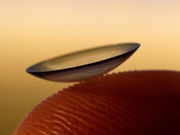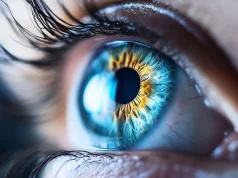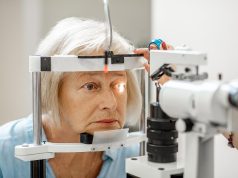Only prostaglandin analogs achieve reduction of positive IOP slope from awake/sitting-sleep/supine
WEDNESDAY, Dec. 9, 2015 (HealthDay News) — For patients with glaucoma, prostaglandin analogs seem to affect circadian intraocular pressure (IOP)-related patterns, according to a study published in the December issue of Clinical & Experimental Ophthalmology.
Kaweh Mansouri, M.D., M.P.H., from the University of California in San Diego, and colleagues used a contact lens sensor to examine the circadian IOP-related effects of ocular hypertensive medications in a prospective randomized trial. Twenty-three patients with primary open-angle glaucoma underwent ambulatory recording of IOP-related patterns for 24 hours in one eye during three monthly sessions. Patients were untreated in session one (S1), randomized to glaucoma drops for S2, and had a prostaglandin analog add-on for S3.
The researchers found that at S1 and S2, positive linear slopes were seen from wake/sitting to sleep/supine, while negative slopes were seen at S3 (S1 to S2, P= 0.01; S1 to S3, P = 0.02). Slopes changed significantly with the introduction of drops in the prostaglandin group (S1 to S2, P < 0.024), whereas they did not change in the mixed group combining the three other classes (S1 to S2, P = 0.060). There were no statistically significant differences between sessions (S1 to S2, P = 0.541; S1 to S3, P = 0.083; S2 to S3, P = 0.092).
“Prostaglandin analogs, but not other medications, seem to flatten the IOP-related increase at transition of the wake/sitting to the sleep/supine period, but do not seem to have an effect on acrophase and amplitude,” the authors write.
Several authors disclosed financial ties to the pharmaceutical, biotechnology, and medical device industries.
Copyright © 2015 HealthDay. All rights reserved.








